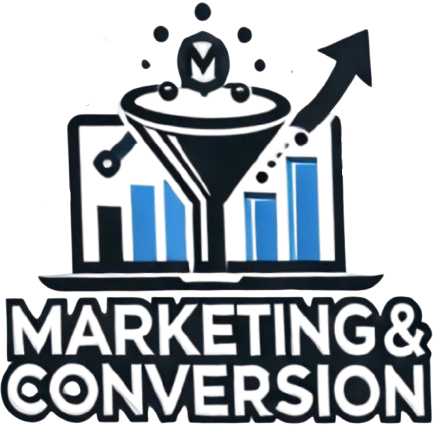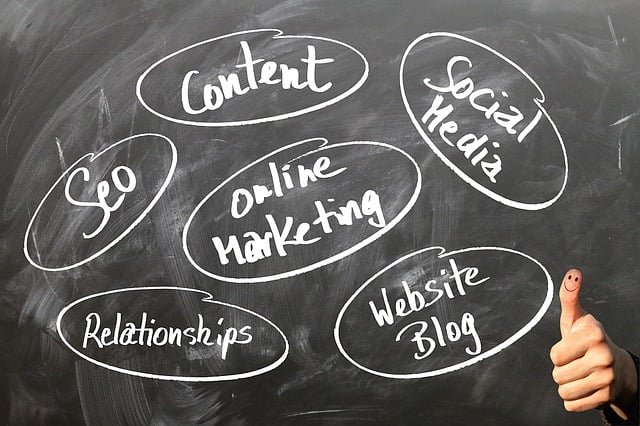E-commerce platform
An e-commerce platform is a software application designed to facilitate the establishment and administration of an online store for businesses.
The application includes all the tools needed for marketing and selling products, as well as features for reviewing store performance, managing inventory, setting product prices, and running promotions.
Similar to other types of enterprise software, an e-commerce platform can be either on premise or cloud based. The majority of small and medium-sized businesses (SMBs) favor a cloud-based e-commerce platform because the initial costs are minimal, and they have the flexibility to easily adjust their usage without requiring substantial modifications to their operations.
4 steps to document an e-commerce marketing plan
It is important to first document your E-commerce marketing plan before embarking on the development of an e-commerce marketing strategy, as the plan serves as a helpful guide during the execution of the strategy.
Define goals and objectives for your store
Before starting an E-commerce store, it is important to first set goals. An effective way to do this is by reviewing the conversion benchmarks for your specific niche or industry, and then setting goals and objectives accordingly. It is crucial to consider what is currently working in the industry to avoid disappointment when reviewing the overall performance later on.
Existing stores should assess their current performance and compare it to industry benchmarks. If their performance falls short of the benchmarks, the ideal approach is to set goals that lie halfway between their current performance and the industry standards. If their performance surpasses the standards, they can set higher goals based on their marketing budget.
Assess your target audience and competition
Do you have knowledge about your perfect customers? If yes, what are their qualities, hobbies, ability to make purchases, and other demographic, geographic, psychographic traits? Combine all this data to develop multiple buyer personas. Understanding your ideal clients will assist you in determining a conversion funnel that suits your needs.
At the same time, monitor competitor activities to observe their successful strategies. Are they heavily investing in Facebook ads or producing YouTube videos? Utilize this information to determine the most effective techniques for launching your e-commerce marketing plan.
Determine the marketing strategies and tactics
In order to achieve your marketing goals and objectives, it is important to determine which activities will be helpful. This knowledge will aid in selecting suitable marketing channels, strategies, and tactics to ensure that your sales targets are met. For instance, if you are a B2C e-commerce store with ambitious sales targets, it may be necessary to make substantial investments in social media advertising in order to reach your desired audience.
If you have created a conversion funnel, it will be simple to identify the marketing channels that will generate optimal outcomes at each stage. For instance, SEO will be essential for increasing awareness, while email marketing will help maintain engagement during the interest and desire phases.
Build your martech stack
To create a martech stack for your business, start by determining the marketing channels you should be involved in and then locate the necessary tools and applications that simplify the automation and management of marketing activities across these channels.
To ensure the strength of your martech stack, select products that provide extensive features.
In addition to the e-commerce platform, incorporating a Marketing Automation Platform (MAP) and a Customer Relationship Management (CRM) application will lay the groundwork for your marketing endeavors. Therefore, if you opt for a comprehensive MAP, there is no need to spend on individual email marketing and social media management software.
Marketing tactics to promote your online store
1. Search engine optimization (SEO)
In order to rank organically on the search engine result pages (SERP), it is necessary to have a robust SEO strategy. Here are some factors to consider that can assist in improving your store’s search engine ranking.
- Make your website mobile-friendly.
- Optimize page load time (Google PageSpeed Insights).
- Run an SEO audit (Ubersuggest)
- Perform thorough keyword research and identify keywords that you want to rank for (Google Keyword Planner).
- List all product, category, and blog posts and pages. Correlate target keywords and keyword phrases to each post and page and place them strategically in on-page elements such as the title, URL, header tags, text, alt text, anchor link, and so on.
- Strengthen your local SEO game by creating your Google My Business profile
- .Fix technical SEO errors such as duplicate pages. Seek help from an SEO expert if necessary.
- Setup your website on Google Search Console.
There are some other SEO tools that are recommended.
- SEMrush
- Moz Keyword Explorer
- Site Explorer by Ahrefs
2. Utilize (and keep building) your email list
In a physical store, it is crucial to have an effective email marketing plan. Gather email addresses from various sources such as customers, potential customers, and individuals interested in your events. Once you open, send all these individuals an email informing them about the option to shop at your online store.
One possibility to consider now is to offer a promotion to those who are on your email list, or even a referral discount to incentivize customers to share your site with friends and family members.
Email addresses remain a highly effective marketing tool in ecommerce, hence it is crucial to continue gathering them on your website. Certain brands utilize pop-up boxes to encourage users to provide their email addresses in exchange for a minor incentive, such as a 15% discount on their initial purchase or complimentary shipping.
To ensure effective communication with your email list, it is important to maintain a consistent flow of messages. Create a regular schedule for sending emails and include promotions, new content, product launches, and other updates that will entice customers to visit your website.
3. Boost your organic social presence
To enhance your online business, it is essential to maximize your digital engagement. A simple and impactful approach is to prioritize your social media platforms, ensuring they contain captivating videos and visually appealing images.
In addition to hosting giveaways and collaborating with active bloggers in your niche, another effective method to maximize the potential of social media is by utilizing relevant hashtags.
If you are already well-established on social media platforms and have a loyal group of followers, now is the perfect opportunity to expand upon that. Increase the number of posts you make and devote extra time to crafting visually appealing content and attention-grabbing videos. By increasing audience engagement, you will also enhance the likelihood of others becoming aware of your brand through your followers. Encourage sharing among your audience and make use of content created by users themselves.
If you need to improve your social media presence, take action now. There’s no need to be active on every platform. Just ensure that you have a presence on the channels that are relevant to your target audience and focus your efforts there.
4. Create interesting, useful content
One effective strategy to drive traffic to your website and establish your brand as a credible authority in your industry is by producing valuable content that caters to potential customers interested in purchasing your product.
When Robert Ellis, the owner of Bavarian Clockworks, started his ecommerce store, he aimed to create comprehensive resource pages to assist customers in making well-informed choices regarding his products – genuine German cuckoo clocks.
According to Ellis, our user guides play a central role on the website as they offer significant benefits to potential customers and are also highly advantageous for SEO purposes.
5. Try out google Ads
By utilizing Google Ads for search engine marketing, you have the chance to compete for keywords and be displayed as the first result on search engine results pages. The primary goal of search engine optimization is to secure the highly desired “top spot”, however, it’s important to note that Google Ads will still be prioritized.
Search engine marketing is an excellent method of promoting your website due to its lack of design requirements and its effectiveness in attracting fresh visitors. It provides real-time results and allows you to modify your campaign strategies based on performance as you proceed.
6. Advertise on social platforms
When considering advertising on social media, it is wise to concentrate your ad spending on these platforms since it is a known fact that people spend substantial amounts of time on them. Drawing a parallel, if you were to invest in a billboard, you would carefully select the most suitable road for its placement. Likewise, approach social media advertising with the same mindset.
If your audience is more active on Instagram than Twitter, it is advisable to concentrate your investments on Instagram.
Start with small steps when using photos and videos in your ads. Use a photo ad to introduce your product to a new audience. Begin by featuring simple and captivating images of your product being used. Evaluate its performance in the initial weeks and make necessary adjustments to your approach.
7. Partner with complementary brands
One way to expand reach is to establish collaborations with other brands. Seek out businesses that have a similar target audience but offer complementary products. This way, both partners can reach a fresh, yet pertinent, audience. To provide an illustration, if you specialize in selling outdoor gear, it would be beneficial to partner with a brand that focuses on hiking shoes.
Methods for cross-promotion can differ and can be implemented at various stages of the funnel. For instance, at the top-of-funnel, you can engage in activities such as co-sponsoring an outdoor living podcast or blog. Another option is to collaborate on a co-branded gift guide, which can be particularly effective depending on the season. Additionally, you can also conduct down-funnel promotions, such as providing a discount on one product when another is purchased.
8. Consider using influencer marketing
Influencers possess a substantial online audience and possess the ability to impact the purchasing behavior of said audience.
To effectively utilize influencer marketing, it is important to find the appropriate influencer who can expose your product to a considerable number of potential customers, thus enhancing your brand’s recognition. Ensure that the influencer you choose is in line with your target audience and shares the same values as your brand.
Influencer marketing tactics commonly involve an influencer composing a blog post regarding your product, sharing social media content that assesses or exhibits your product, or discussing your product during an event.
9. Leverage your offline store(s)
If your physical store has a strong reputation and a dedicated customer base, you can leverage your face-to-face interactions to increase traffic to your recently launched online store.
You can engage customers with your brand even after they leave the store by using non-intrusive methods. These methods may include inviting them to join your email list when they checkout, informing them about your customer loyalty program (if applicable), and highlighting any promotions on social media that they might be interested in following.
One possibility is to consider providing flyers containing promotion codes that can be shared with friends and family who may not reside in the vicinity of your brick and mortar store. Your customers who visit your store in person have the potential to become powerful advocates and contribute to the widespread dissemination of your message.



